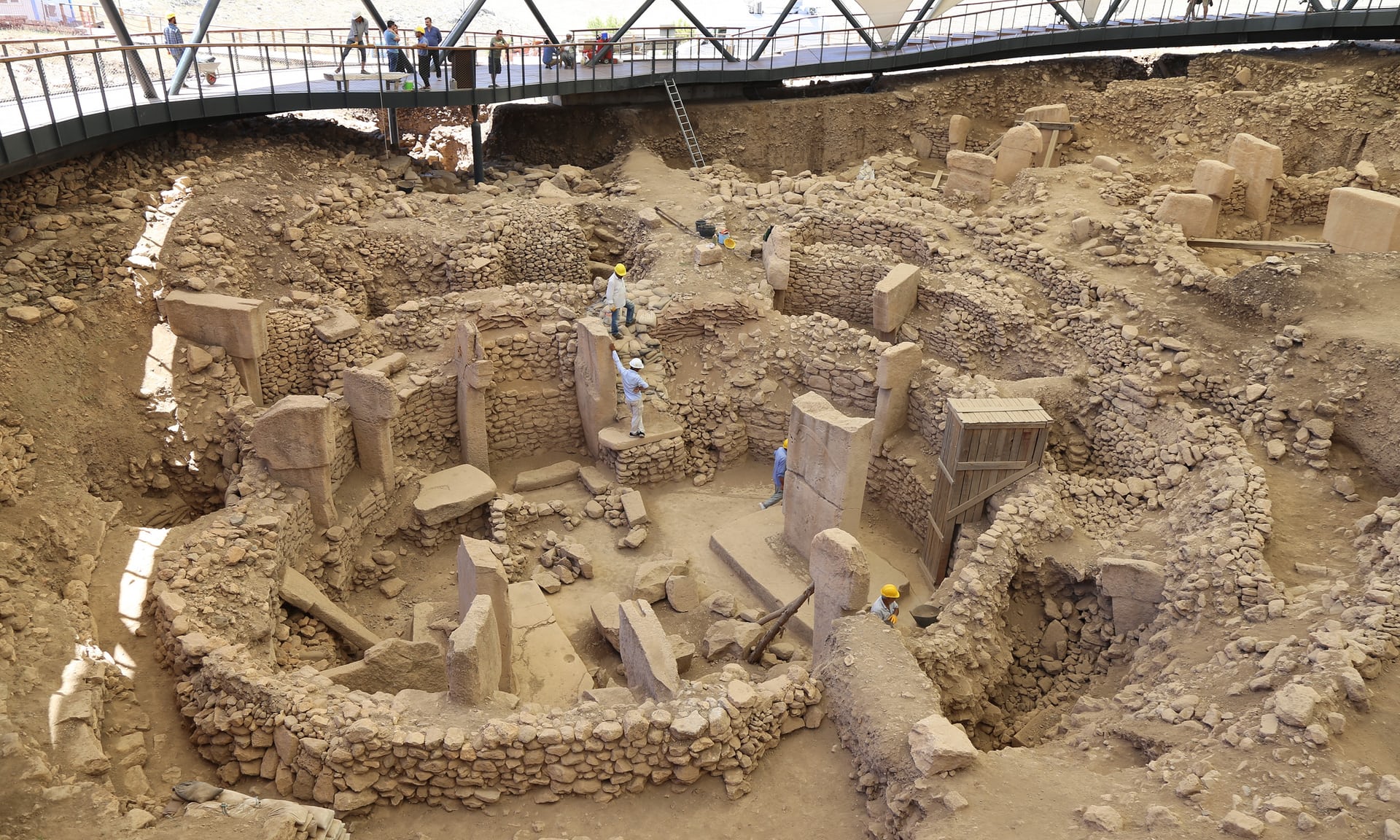DepthReading
The Guardian view on world heritage: in the beginning was the dream
part of the excavations at Göbekli Tepe in south-eastern Turkey. Photograph: Anadolu Agency/Getty Images
Unesco has just added to its list of world heritage sites one of the most remarkable archaeological locations in the world, one which raises huge questions about the development of civilisation and offers no answers at all. Göbekli Tepe appears to be no more than a hill of dirt in the bare, brown landscape of south-eastern Turkey, but excavations starting in the 1990s revealed something extraordinary: beneath the surface were rings of megaliths, carved stones weighing up to 20 tonnes, which had been first placed there 11,000 years ago, before the invention of agriculture or the discovery of metal. No one seems actually to have lived on the site. This was, so far as we can tell, the first temple complex built anywhere on earth. It far predates cities. Its builders knew how to plant stones and carve them, but not to plant crops for food. Yet somehow they must have had the social organisation to come together in groups larger than any hunter-gatherer band and coordinate their labours over months or years.
What they believed, and why they did this, remains a mystery, and one which opens a profound question. Did cities make gods or did gods make cities? One theory holds that the development of elaborate religions and belief systems followed the development of complicated societies, in which agriculture provided a surplus of food. There were relatively large settlements in other parts of the Middle East at around that time, made possible by the immense fertility of the land before humans and their goats took it over. But no one seems to have lived at Göbekli Tepe. It was not built for any practical purpose. It must have been the expression of a great shared dream. In that sense, it was a city that the gods built, even if the gods existed only in the minds of their worshippers and had no form that we could now recognise.
One Australian researcher has suggested that the builders thought of the limestone they used as itself alive, and that the structures that they built with it represented a negotiation with the living, hungry rock. This is a way of thinking that is profoundly strange to us – but even if the explanation is entirely wrong, the structures of Göbekli Tepe must have emerged from some thought-world quite as alien, for they make no sense in ours.
Göbekli Tepe is only one of more than a thousand of Unesco’s world heritage sites, which include both expressions of the human spirit in architecture, and areas of nature which stir us profoundly. Unesco has been attacked as a bloated bureaucracy, but it is also itself the expression of a noble dream: that there could be places and buildings so beautiful that they transcend nationality and even culture and speak in some way to the whole human race. They range from Malawi’s Chongoni rock art area all the way to the whole city of Venice. And their immense, incomprehensible diversity shows us that the human imagination is stranger – and stronger – than we can ever hope to understand.
Category: English
DepthReading
Key words:

